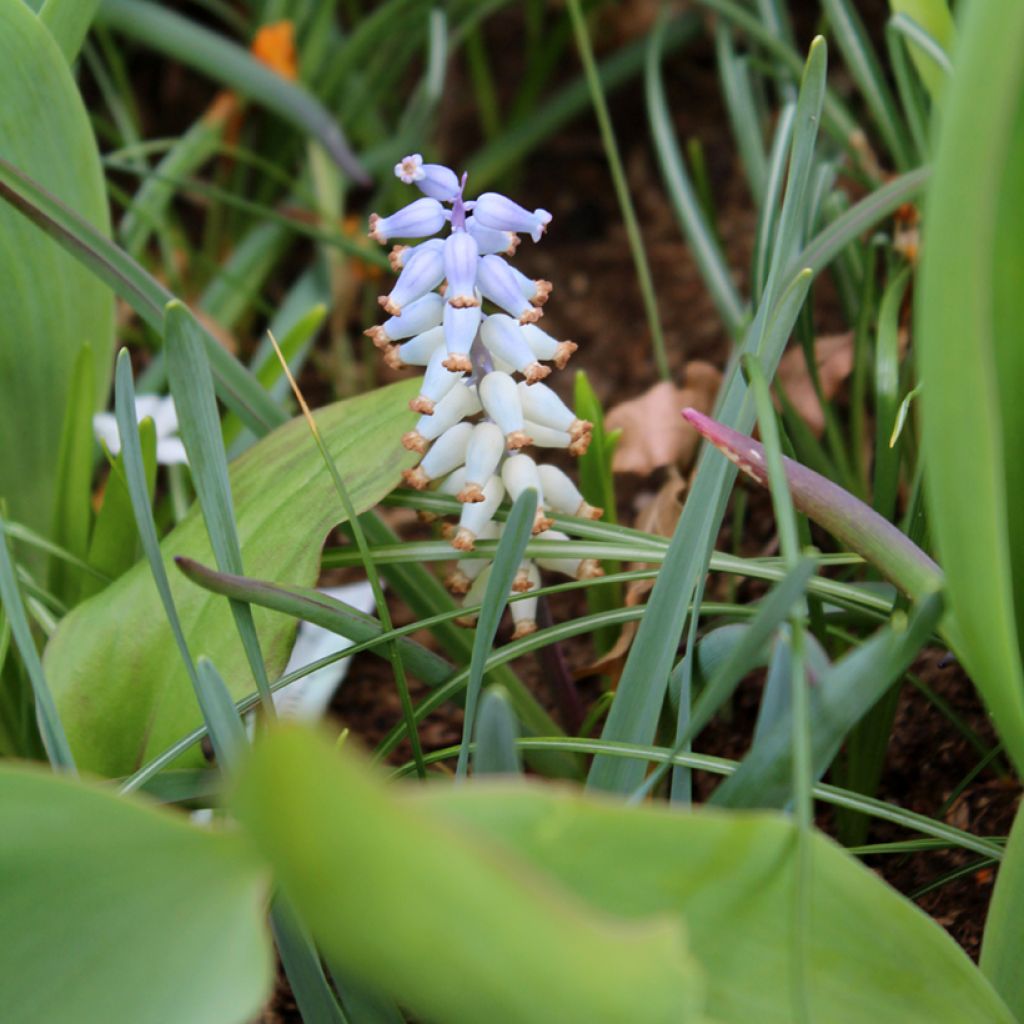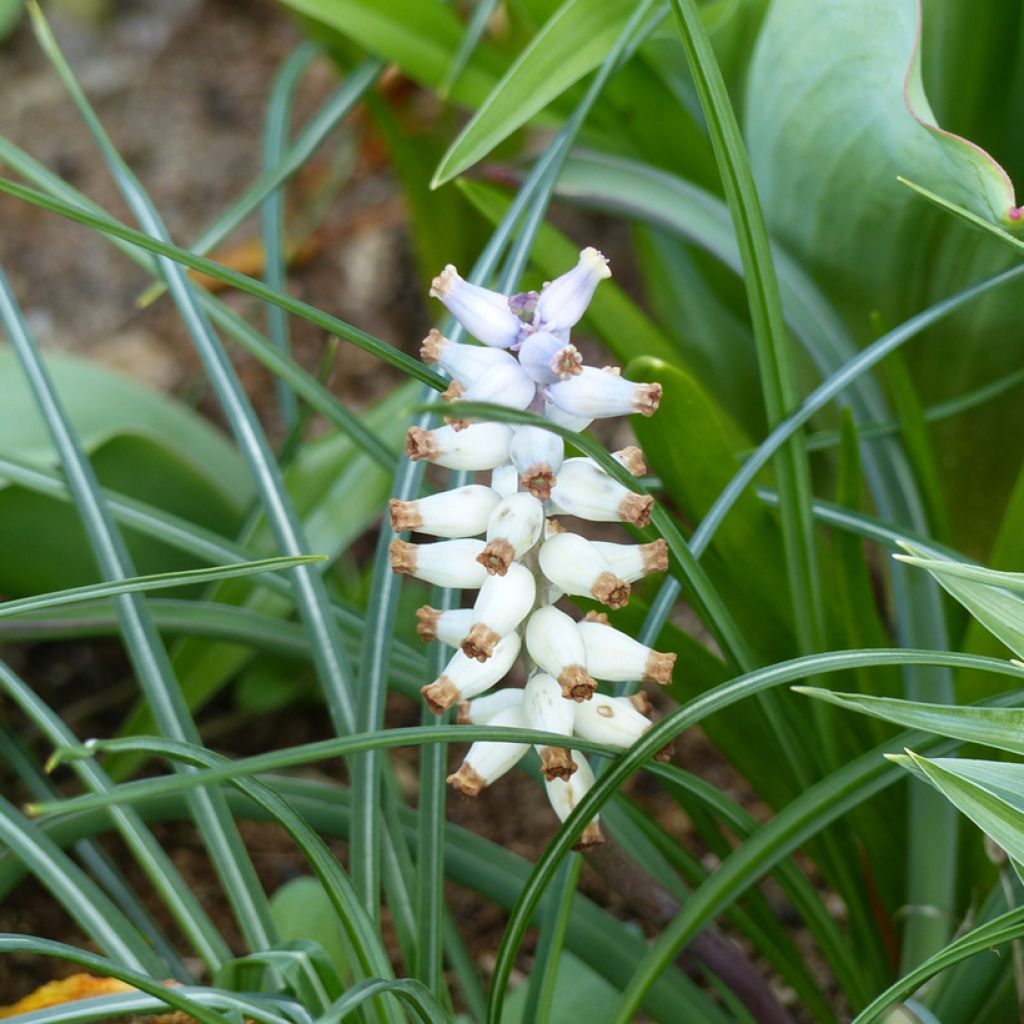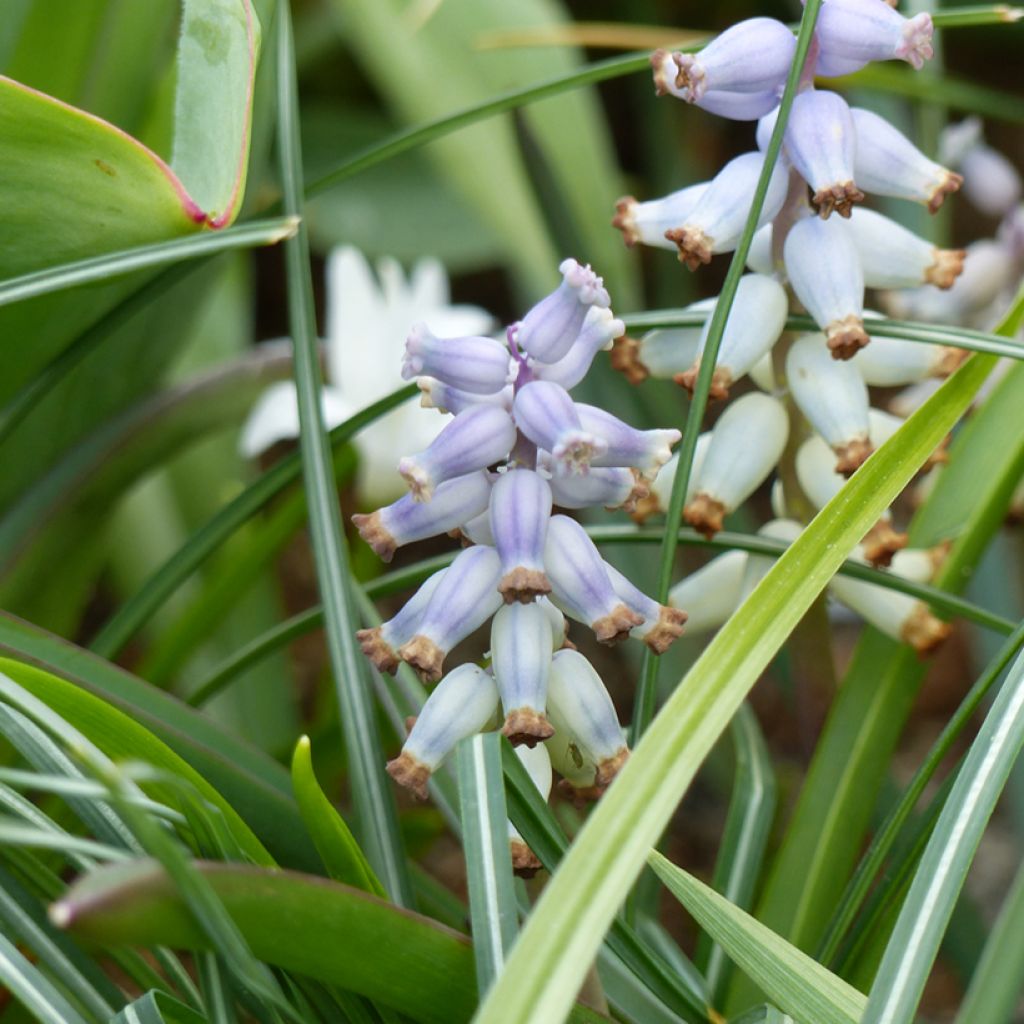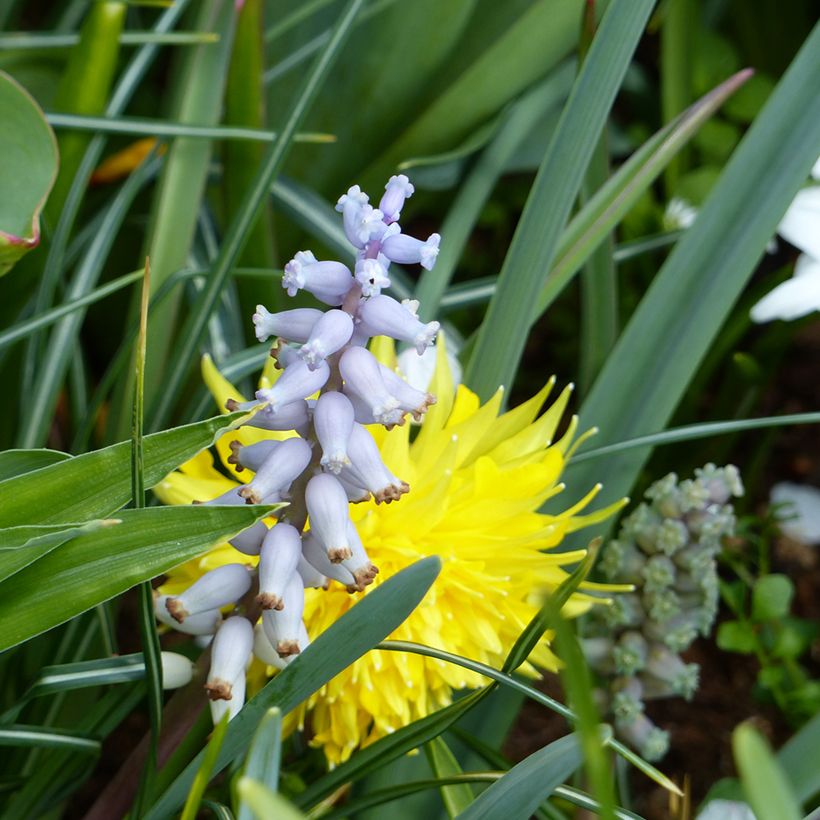

Muscari muscarimi


Muscari muscarimi


Muscari muscarimi
Muscari muscarimi
Muscari racemosum
Common Grape Hyacinth, Starch Grape Hyacinth
This plant carries a 6 months recovery warranty
More information
We guarantee the quality of our plants for a full growing cycle, and will replace at our expense any plant that fails to recover under normal climatic and planting conditions.
From €5.90 for pickup delivery and €6.90 for home delivery
Express home delivery from €8.90.
Does this plant fit my garden?
Set up your Plantfit profile →
Description
Muscari muscarimi is a very rare botanical species, also known as Muscari racemosum, or sometimes Muscari moschatum, although the names for muscaris can sometimes be confusing. In spring, it produces slender upright clusters where small elongated white to pale yellow bells and a few upper blue-purple flowers are tightly packed on a red stem and bluish-green linear foliage. The flowers have a delightful sweet musk fragrance. It is native to sunny dry hillsides in southern Turkey and therefore thrives in well-drained soil in full sun, ideal in rock gardens.
Muscari muscarimi is a plant of the Asparagaceae family native to southwestern Turkey where it grows in rocky areas. It is a robust plant with large bulbs that have thick fleshy roots. Each bulb produces several greyish-green leaves. The individual flowers measure 7 to 9 mm long, are grey-white to white-yellow with a coppery edge when fully open, sometimes with a bluish tint. The top of the inflorescence consists of a few small purple flowers. They have a distinct musky scent. On hot days, their musky fragrance fills the air around them. The nectar-rich flowers, typical of all Muscaris, make them highly attractive to bees. As a naturalising bulb, more and more flowers will appear over the years. Flowering occurs between March and May depending on the climate: it is earlier in the south, later in the north and in the mountains. The floral stems measure 10 to 20 cm in height and bear a cluster of 6-8 cm at their tip.
Plant the lovely Muscari muscarimi in a container to enjoy its beauty and fragrance. The flowers transition from mauve to cream, creating a dreamy two-tone gradient that perfectly complements their scent. In the garden, place it in a dry rock garden with small plants, as it greatly appreciates the well-drained soil and full sun it provides. Its gentle and subtle flowering pairs beautifully with other small spring bulbs. This bright muscari particularly complements white botanical daffodils, Ipheions, and white Greek anemones in delicate scenes. In a natural-inspired garden, it requires little maintenance.
Report an error about the product description
Muscari muscarimi in pictures


Plant habit
Flowering
Foliage
Botanical data
Muscari
racemosum
Asparagaceae
Common Grape Hyacinth, Starch Grape Hyacinth
Muscari racemosum, Muscari moschatum, Muscari muscarimi
Eastern Europe
Planting and care
Plant Muscari muscarimi in autumn, at a depth of 8 cm and a distance of 7 cm, in regular, well-loosened, well-drained soil, preferably in full sun. In heavy soils, add coarse sand and compost to the planting. Divide the clumps every 5 years, when the leaves turn yellow.
Planting period
Intended location
Care
This item has not been reviewed yet - be the first to leave a review about it.
Haven't found what you were looking for?
Hardiness is the lowest winter temperature a plant can endure without suffering serious damage or even dying. However, hardiness is affected by location (a sheltered area, such as a patio), protection (winter cover) and soil type (hardiness is improved by well-drained soil).

Photo Sharing Terms & Conditions
In order to encourage gardeners to interact and share their experiences, Promesse de fleurs offers various media enabling content to be uploaded onto its Site - in particular via the ‘Photo sharing’ module.
The User agrees to refrain from:
- Posting any content that is illegal, prejudicial, insulting, racist, inciteful to hatred, revisionist, contrary to public decency, that infringes on privacy or on the privacy rights of third parties, in particular the publicity rights of persons and goods, intellectual property rights, or the right to privacy.
- Submitting content on behalf of a third party;
- Impersonate the identity of a third party and/or publish any personal information about a third party;
In general, the User undertakes to refrain from any unethical behaviour.
All Content (in particular text, comments, files, images, photos, videos, creative works, etc.), which may be subject to property or intellectual property rights, image or other private rights, shall remain the property of the User, subject to the limited rights granted by the terms of the licence granted by Promesse de fleurs as stated below. Users are at liberty to publish or not to publish such Content on the Site, notably via the ‘Photo Sharing’ facility, and accept that this Content shall be made public and freely accessible, notably on the Internet.
Users further acknowledge, undertake to have ,and guarantee that they hold all necessary rights and permissions to publish such material on the Site, in particular with regard to the legislation in force pertaining to any privacy, property, intellectual property, image, or contractual rights, or rights of any other nature. By publishing such Content on the Site, Users acknowledge accepting full liability as publishers of the Content within the meaning of the law, and grant Promesse de fleurs, free of charge, an inclusive, worldwide licence for the said Content for the entire duration of its publication, including all reproduction, representation, up/downloading, displaying, performing, transmission, and storage rights.
Users also grant permission for their name to be linked to the Content and accept that this link may not always be made available.
By engaging in posting material, Users consent to their Content becoming automatically accessible on the Internet, in particular on other sites and/or blogs and/or web pages of the Promesse de fleurs site, including in particular social pages and the Promesse de fleurs catalogue.
Users may secure the removal of entrusted content free of charge by issuing a simple request via our contact form.
The flowering period indicated on our website applies to countries and regions located in USDA zone 8 (France, the United Kingdom, Ireland, the Netherlands, etc.)
It will vary according to where you live:
- In zones 9 to 10 (Italy, Spain, Greece, etc.), flowering will occur about 2 to 4 weeks earlier.
- In zones 6 to 7 (Germany, Poland, Slovenia, and lower mountainous regions), flowering will be delayed by 2 to 3 weeks.
- In zone 5 (Central Europe, Scandinavia), blooming will be delayed by 3 to 5 weeks.
In temperate climates, pruning of spring-flowering shrubs (forsythia, spireas, etc.) should be done just after flowering.
Pruning of summer-flowering shrubs (Indian Lilac, Perovskia, etc.) can be done in winter or spring.
In cold regions as well as with frost-sensitive plants, avoid pruning too early when severe frosts may still occur.
The planting period indicated on our website applies to countries and regions located in USDA zone 8 (France, United Kingdom, Ireland, Netherlands).
It will vary according to where you live:
- In Mediterranean zones (Marseille, Madrid, Milan, etc.), autumn and winter are the best planting periods.
- In continental zones (Strasbourg, Munich, Vienna, etc.), delay planting by 2 to 3 weeks in spring and bring it forward by 2 to 4 weeks in autumn.
- In mountainous regions (the Alps, Pyrenees, Carpathians, etc.), it is best to plant in late spring (May-June) or late summer (August-September).
The harvesting period indicated on our website applies to countries and regions in USDA zone 8 (France, England, Ireland, the Netherlands).
In colder areas (Scandinavia, Poland, Austria...) fruit and vegetable harvests are likely to be delayed by 3-4 weeks.
In warmer areas (Italy, Spain, Greece, etc.), harvesting will probably take place earlier, depending on weather conditions.
The sowing periods indicated on our website apply to countries and regions within USDA Zone 8 (France, UK, Ireland, Netherlands).
In colder areas (Scandinavia, Poland, Austria...), delay any outdoor sowing by 3-4 weeks, or sow under glass.
In warmer climes (Italy, Spain, Greece, etc.), bring outdoor sowing forward by a few weeks.


































